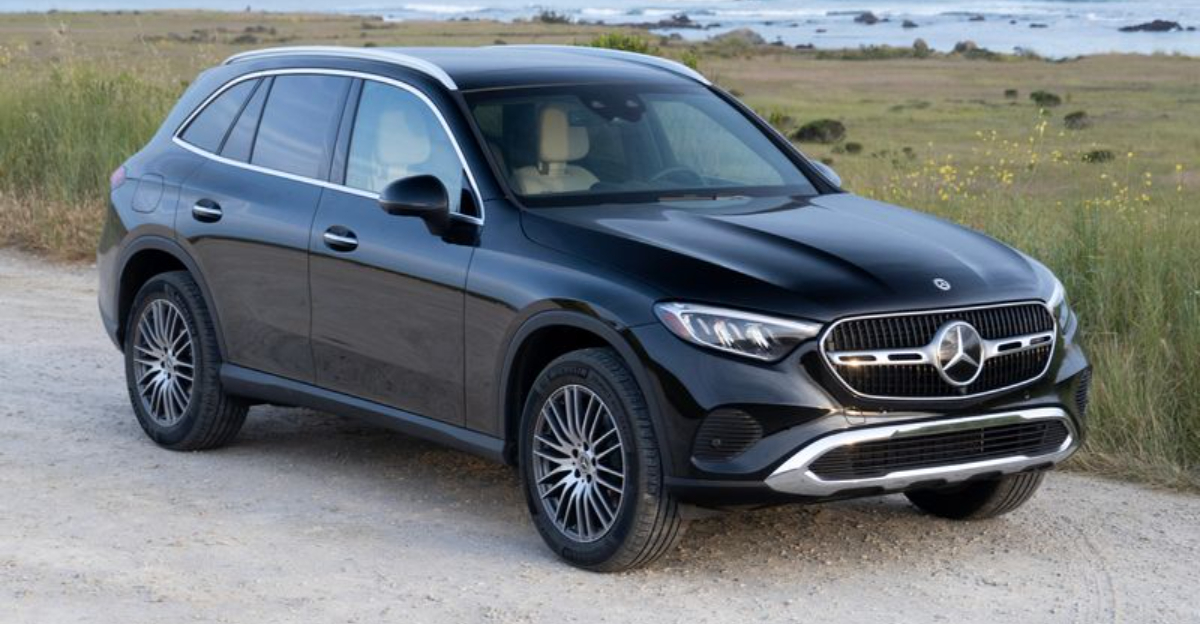22 Reasons Buying A Mercedes Might Disappoint You

A Mercedes badge carries a certain promise — luxury, performance, prestige. But sometimes, reality doesn’t quite match the brochure.
Beneath the polished exterior and high-end tech lies a collection of quirks, costs, and compromises that can leave even hardcore fans raising their eyebrows.
From wallet-draining repairs to tech that tries too hard, owning a Mercedes isn’t always the dream it’s cracked up to be.
Turns out, even icons can have a few dents in their reputation.
1. Wallet-Draining Maintenance Costs

Ever had sticker shock at a restaurant? That’s nothing compared to your first Mercedes service bill.
Regular maintenance runs 2-3 times higher than mainstream brands, with routine services easily hitting $400-$800.
Specialized technician labor rates hover around $175 per hour at dealerships. Even basic procedures require Mercedes-specific diagnostic equipment, turning simple fixes into financial adventures.
2. Parts That Cost More Than Your First Car

Need a new headlight assembly? That’ll be $1,200, please! Mercedes parts pricing exists in its own financial universe, where even humble components command premium prices.
A simple control arm might cost $300 compared to $80 for a Toyota equivalent.
The German engineering precision comes with German engineering price tags, turning minor repairs into major expenses that leave owners questioning their life choices.
3. Electronics More Complicated Than Rocket Science

Mercedes packs more computing power than early NASA missions into their vehicles. While impressive on paper, this creates a labyrinth of potential failure points.
Owners frequently battle mysterious electrical gremlins that appear randomly.
The car might decide your seat warmers should activate in summer or that your infotainment system needs an unexpected reboot during navigation.
These technological tantrums often require specialized diagnostics beyond the skills of your neighborhood mechanic.
4. Value Vanishing Act

That new Mercedes loses value faster than ice cream melts in August. Luxury vehicles typically depreciate 40-50% within three years, with Mercedes often leading the pack in value erosion.
A $75,000 model might be worth just $40,000 after 36 months of ownership. The prestige premium you paid upfront evaporates quickly, making leasing often more financially sensible than buying outright.
First owners essentially subsidize second-hand buyers who get nearly the same car for drastically less.
5. Extended Warranties That Require Extended Credit

Mercedes extended warranty packages make dental insurance look affordable. Premium coverage plans can exceed $4,000 for just two additional years of protection.
The kicker? These pricey policies often come with surprising exclusions and deductibles.
Many owners discover that their costly warranty doesn’t cover electronic components that commonly fail or has loopholes for “wear items” that mysteriously include expensive parts.
Reading the fine print becomes a masterclass in disappointment.
6. Infotainment Systems With Mood Swings

Mercedes infotainment systems occasionally behave like temperamental artists.
Screens freeze mid-navigation, Bluetooth connections drop mysteriously, and voice commands get misinterpreted in spectacular ways.
Software updates, meant to fix these issues, sometimes introduce exciting new problems instead.
Owners find themselves performing the “Mercedes restart ritual” – turning the car off, waiting, then restarting – more often than they’d like to admit.
The irony of needing tech support for a luxury car isn’t lost on frustrated drivers.
7. Sensors That Cry Wolf

False alarms become your new normal with Mercedes ownership. Random warning lights illuminate your dashboard like a Christmas tree, often for issues that don’t actually exist.
The tire pressure monitoring system might panic over normal temperature changes.
Collision avoidance sensors occasionally mistake shadows for obstacles, triggering heart-stopping emergency braking for no reason.
These phantom alerts create a peculiar form of driver anxiety – is it a real problem or just another electronic tantrum?
8. Repair Procedures From Engineering Nightmares

Mercedes engineers apparently believe that accessing simple components should be an Olympic sport. Replacing a headlight bulb might require removing the entire front bumper in some models.
Battery changes often involve dismantling interior components or removing computer modules.
These design choices transform straightforward repairs into labor-intensive ordeals. What takes 20 minutes on a Toyota can require 3 hours on a Mercedes, with labor costs mounting by the minute.
9. Fuel Economy That Defies Advertising Claims

Those optimistic MPG figures in glossy brochures? Pure fantasy for most real-world drivers. Mercedes vehicles typically deliver 15-30% lower fuel economy than EPA estimates suggest.
Urban driving in larger models can produce genuinely shocking consumption figures.
The powerful engines, combined with vehicle weight and complex systems, create thirsty beasts that demand premium fuel.
Owners expecting reasonable efficiency find themselves developing close relationships with gas station attendants instead.
10. Dealership Service Roulette

Mercedes dealership service quality varies wildly from exceptional to appalling, often within the same location. The “luxury experience” promised during sales vanishes when your car needs attention.
Many owners report condescending attitudes, unexplained delays, and mysterious additional charges.
Service advisors sometimes seem more focused on upselling additional work than addressing your actual concerns.
The disconnect between the premium purchase experience and subsequent service interactions leaves many owners feeling betrayed.
11. Insurance Premiums That Rival Mortgage Payments

Your insurance company sees that three-pointed star and immediately reaches for your wallet. Mercedes models typically cost 30-50% more to insure than mainstream vehicles of similar size and value.
High repair costs, expensive parts, and sophisticated technology all contribute to elevated premiums.
Some owners report annual insurance expenses exceeding $3,000 for mid-range models. The prestigious badge effectively carries an ongoing tax that continues long after the purchase price is paid.
12. Air Suspension That Eventually Surrenders

Mercedes air suspension systems provide magical comfort—until they don’t.
These sophisticated systems typically begin failing around 60,000-80,000 miles, leaving owners with repair estimates ranging from $2,000 to $5,000.
Warning signs include uneven ride height, compressor noises that wake the neighbors, or the car awkwardly sagging overnight like a deflated soufflé.
The engineering marvel becomes a financial liability, with some owners opting to convert to conventional springs rather than repair the original system.
13. Cargo Space That Vanishes Into Thin Air

Mercedes prioritizes sleek styling over practical storage in many models. The sloping rooflines and aggressive designs that look stunning in photos translate to surprisingly cramped cargo areas in real life.
Owners discover that everyday items like golf clubs or luggage for a family trip simply won’t fit.
Even the SUV models offer less usable space than their dimensions suggest. The beautiful exterior proportions extract a functional price that becomes apparent only after living with the vehicle.
14. Key Fobs With Battery Anxiety

Mercedes key fobs drain batteries faster than a teenager drains the refrigerator. Owners frequently experience the panic of suddenly non-responsive keys, typically at the most inconvenient moments.
Replacement batteries cost 3-4 times more than standard types, and some models require dealer programming after battery changes.
The sophisticated fobs that impressed friends during the honeymoon phase become annoying maintenance items that require their own care and feeding schedule.
15. Interior Materials That Don’t Age Gracefully

Entry-level Mercedes models hide a dirty secret: interior materials that deteriorate faster than their price tags suggest.
Frequently-touched surfaces develop shine, buttons lose their lettering, and leatherette shows wear patterns within the first few years.
The contrast between exterior build quality and interior durability creates a strange disconnect. Materials that look premium when new reveal their true nature over time.
Owners expect Mercedes longevity throughout but discover that certain cabin elements have surprisingly short lifespans.
16. Run-Flat Tires That Run Up Bills

Run-flat tires come standard on many Mercedes models, promising safety but delivering financial pain. These specialized tires typically cost 30-50% more than conventional tires and often last fewer miles.
Their stiff sidewalls transmit more road noise and impact harshness into the cabin. When they do inevitably need replacement, owners discover limited brand options and availability.
The technology that sounds reassuring during the sales pitch becomes an ongoing expense that diminishes overall ownership satisfaction.
17. The Missing Spare Tire Mystery

Modern Mercedes vehicles have eliminated spare tires entirely, replacing them with tire inflation kits that work only for certain types of punctures.
This weight-saving measure leaves owners vulnerable during more serious tire emergencies.
Roadside assistance becomes your only option for many tire failures. The irony of a premium vehicle that can’t handle a basic roadside repair isn’t lost on stranded owners.
This cost-cutting measure feels particularly out of place in vehicles commanding premium prices.
18. AMG Models With Spine-Adjusting Ride Quality

AMG models deliver exhilarating performance with a side order of chiropractic adjustments. The ultra-firm suspension settings that help set lap records also transmit every road imperfection directly to your vertebrae.
Daily driving becomes a lesson in impact absorption as your body compensates for the unyielding suspension.
Owners often find themselves avoiding certain routes with rough pavement. The performance credentials that seemed so important during the test drive become less compelling during the daily commute.
19. Infotainment Learning Curve Steeper Than Everest

Mercedes MBUX and earlier COMAND systems require dedicated study time that rivals college courses.
The multi-layered menus and control options create a bewildering array of possibilities that overwhelm many owners.
Simple tasks like changing radio stations can require multiple steps. The voice control that works flawlessly in demonstrations struggles with real-world accents and ambient noise.
Owners frequently report using only a fraction of available features because accessing the rest feels like preparing for an IT certification exam.
20. Turbo Lag That Tests Your Patience

Mercedes turbocharged engines deliver impressive power figures but often suffer from noticeable turbo lag.
This delay between pressing the accelerator and feeling the power can be disconcerting in traffic situations requiring immediate response.
The hesitation feels particularly pronounced when cold or when attempting quick maneuvers.
While performance numbers look impressive on paper, the real-world driving experience includes these momentary hesitations that diminish the premium feel.
Sport mode helps but introduces its own issues with fuel consumption.
21. Transmission Indecision Syndrome

Mercedes transmissions sometimes behave like indecisive shoppers, hesitating between gears or choosing inappropriately for conditions.
The 7G-Tronic and 9G-Tronic transmissions, while smooth when cruising, can stumble during partial throttle applications or quick acceleration requests.
Cold weather amplifies these traits, with some owners reporting significant delays and clunky shifts until the vehicle reaches operating temperature.
These transmission quirks create a disconnect between the premium brand promise and the actual driving experience, especially during daily commuting scenarios.
22. Aftermarket Support Desert

Newer Mercedes models exist in an aftermarket support wasteland. Independent shops often lack the specialized tools and software needed for proper diagnosis and repair of recent models.
Parts availability for anything beyond routine maintenance items can involve dealer-only sourcing and corresponding markups.
This effective monopoly on certain repairs and components eliminates competitive pricing options.
Owners find their choices increasingly limited as vehicles age, creating dependency on dealer networks regardless of service satisfaction.
